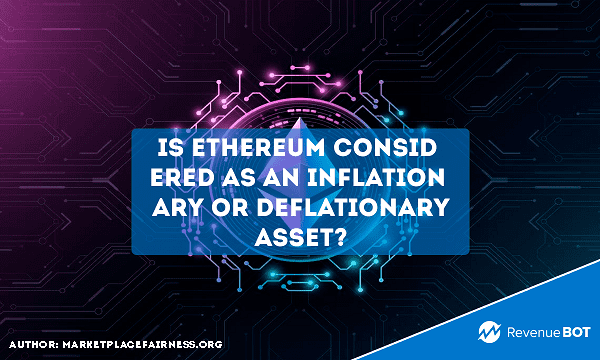
Digital assets are most often marketed as some kind of investment opportunity. Originally, they were created as an alternative to traditional currencies, which are subject to the same fundamentals based on supply and demand, just like fiat currencies.
Basically, what determines its value is the ratio of the amount of an asset in circulation to the number of people willing to buy it, and this concept applies to all economies, including those with digital assets at their core. Cryptocurrencies which are deflationary, that is, they rise in value as supply decreases or remain stable, may appeal more to investors and savers alike since they offer the potential for growth. However, not all cryptocurrencies are designed for such a way of functioning.

A significant number of popular digital currencies are not defined as deflationary; in fact, their supply is not necessarily limited. Instead, some of them use a disinflationary model where inflation is gradually reduced through the increasing issuance of tokens. By way of illustration, there’s a Bitcoin which never reaches deflationary status until all 21 million tokens have been mined. For another example, Ethereum had not been a deflationary currency until the implementation of The Merge, which took place last fall. Here we will examine whether Ethereum is an inflationary asset or a deflationary one.
What deflationary features does Ethereum have?
Tokenomics development by the creators of Ethereum is crucial to the development of deflationary mechanisms. What these mechanisms do is play a major role in how value is augmented and accrued by stakeholders in the Web3 ecosystem.
The supply and demand principles for any token are determined during its development, while deflationary elements, such as burning mechanisms, are integrated into its baseline economic model. This process can either be static, as with Bitcoin, where the supply of tokens is fixed at 21 million, or dynamic, as with Ethereum, where the economic model evolves over time.
Satoshi Nakamoto, the creator of the first-ever crypto, ensured that there would only be 21 million Bitcoins in the world, and no new BTCs are created until that threshold is reached. Such a limited supply of BTC promotes it as a reliable means of saving, unlike fiat currencies, whose supply is constantly increasing due to the monetary policy of central banks.

Ethereum, on the other hand, initially had an inflationary supply with an annual growth rate of 4.5%. Nevertheless, after the shift from Proof-of-Work to Proof-of-Stake as a result, Ethereum 2.0 has become a non-inflationary asset due to its burn rate. At present, the amount of ETH burned to keep the network active exceeds the amount of ETH circulating.
With the advent of the EIP-1559 protocol, Ethereum’s economic model has undergone a change to incorporate a new feature – the burning of a percentage of the gas fee with each transaction. Some experts believe that this mechanism makes Ethereum a more deflationary cryptocurrency than Bitcoin.
In order to maximize savings potential, newly created tokens for both the protocol and application layers can be projected in such a way to become deflationary.
How exactly is inflation kept under control in the Ethereum ecosystem?
To ensure the sustainability of a tokenomics system based on robust business models, deflationary mechanisms are usually integrated into tokenomics right during the development phase. Once a token has an unlimited supply, however, there will be more and more opportunities for token burning as the ecosystem evolves. This drives the need for the token management organization to proactively identify such opportunities and incorporate supply reduction measures into tokenomics.
The Merge of Ethereum exemplifies how a DAO can successfully modify the supply and demand of cryptocurrency by making it more deflationary. Tokenomics changes that are proposed, approved and executed by the DAO responsible for platform and token management, serve a pivotal role in this process.
Such changes are implemented through smart contracts, which define the new economic model and business rules of the ecosystem. What this process demonstrates is the importance of DAOs in ensuring the productive and efficient token governance, as they matter critically in maintaining a sustainable tokenomics structure based on streamlined business models.
Decentralization of token governance is a staple of blockchain technology, which ensures that the economic system is not controlled solely by founding teams, investors, venture capitalists and crypto whales. Such an approach is essential to maintain a fair and transparent token ecosystem where all participants have a say in the platform governance.
Is Ethereum getting bought more often after it became a deflationary token?
As supply decreases over time, Ethereum’s value is expected to climb as demand for the cryptocurrency increases. We’ve already seen some of this stuff happening in the crypto market: following the introduction of EIP-1559, the price of Ethereum soared to new all-time highs.

Moreover, the deflation of Ethereum has also made it a more attractive option for long-term investors. Unlike traditional currencies or even crypto, which may be prone to inflation due to factors such as government policies or mining fees, Ethereum’s supply decreases over time . This means that investors can store Ethereum with no worries about its value declining due to inflation.
Still, it is important to note that the deflationary nature of the Ethereum token is not the only factor that determines its value in the market. Such other factors as its usability online, rate of adoption, and market sentiment also come into play in determining its price. Therefore, before making any investment decisions both investors and traders should consider all of these factors.
Conclusion
Ethereum, a deflationary asset, differs from many other cryptocurrencies and thus becomes more enticing to some investors and traders. Shrinking supply, however, can also make the currency more volatile, so it’s vital to approach Ethereum as an investment opportunity with caution.
Ultimately, the future of Ethereum deflation will depend on decisions made by network developers and community members, as well as broader market factors that could affect demand for the cryptocurrency.
